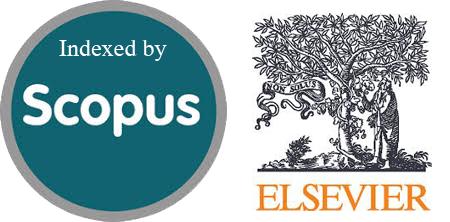Outcome of Programmable Lumboperitoneal Shunt in the Surgical Management of Idiopathic Normal Pressure Hydrocephalus
DOI:
https://doi.org/10.54133/ajms.v7i2.1515Keywords:
Lumboperitoneal shunt, Normal pressure hydrocephalus, Programmable LP shuntAbstract
Background: Normal pressure hydrocephalus (NPH) is a complex neurological disorder characterized by enlarged ventricles in the brain. While the ventriculoperitoneal shunt is the preferred procedure, lumbar-peritoneal shunts also serve as an alternative. Lumbo-peritoneal shunts are an alternative for diverting cerebrospinal fluid without intracranial surgery. Objectives: To assess the efficacy of programmable LP shunts in managing idiopathic normal-pressure hydrocephalus (iNPH), focusing on postoperative outcomes and complications. Methods: This is a multicenter cohort study, including retrospective and prospective data. It involves 20 iNPH hospitalized patients from January 1st, 2019, to January 1st, 2022. The patients underwent programmable lumboperitoneal shunt surgery and had a six-month follow-up period. Patients with confirmed diagnosis of iNPH were included in this study. Other possible causes of symptoms were ruled out, and there were no reasons why the LP shunt should not be placed. Results: This cohort study involved 20 iNPH patients treated with programmable LP shunts; 19 patients (95%) experienced gait improvement, 16(80%) showed improvement in urinary symptoms, and 16 patients (80%) showed improvement in dementia. The most common post-operative complications included over-shunting (15%), subdural hygroma, CSF collection, and infection (10%). Most patients presented between 2–4 months. When evaluating predictors of operative time, the regression analysis revealed no significant factor that could predict operative time accurately. Conclusions: Lumbar-peritoneal shunts showed significant effectiveness rates with a moderate complication rate. It is minimally invasive without life-threatening complications and can be recommended for iNPH treatment.
Downloads
References
Passos-Neto CEB, Lopes CCB, Teixeira MS, Studart Neto A, Spera RR. Normal pressure hydrocephalus: an update. Arq Neuropsiquiatr. 2022;80(5 Suppl 1):42-52. doi: 10.1590/0004-282X-ANP-2022-S118. DOI: https://doi.org/10.1590/0004-282x-anp-2022-s118
Greenberg MS, Arredondo N, (Eds.), Handbook of neurosurgery: Thieme New York; 2001.
Oliveira LM, Nitrini R, Román GC. Normal-pressure hydrocephalus: A critical review. Dement Neuropsychol. 2019;13(2):133-143. doi: 10.1590/1980-57642018dn13-020001. DOI: https://doi.org/10.1590/1980-57642018dn13-020001
Pyykkö OT, Nerg O, Niskasaari HM, Niskasaari T, Koivisto AM, Hiltunen M, et al. Incidence, comorbidities, and mortality in idiopathic normal pressure hydrocephalus. World Neurosurg. 2018;112:e624-e631. doi: 10.1016/j.wneu.2018.01.107. DOI: https://doi.org/10.1016/j.wneu.2018.01.107
Trungu S, Scollato A, Ricciardi L, Forcato S, Polli FM, Miscusi M, et al. Clinical outcomes of shunting in normal pressure hydrocephalus: A multicenter prospective observational study. J Clin Med. 2022;11(5):1286. doi: 10.3390/jcm11051286. PMID: 35268376; PMCID: PMC8911143. DOI: https://doi.org/10.3390/jcm11051286
Nadkarni TD, Rekate HL, Wallace D. Concurrent use of a lumboperitoneal shunt with programmable valve and ventricular access device in the treatment of pseudotumor cerebri: review of 40 cases. J Neurosurg Pediatr. 2008;2(1):19-24. doi: 10.3171/PED/2008/2/7/019. DOI: https://doi.org/10.3171/PED/2008/2/7/019
Toma AK, Tarnaris A, Kitchen ND, Watkins LD. Use of the proGAV shunt valve in normal-pressure hydrocephalus. Neurosurgery. 2011;68(2 Suppl Operative):245-249. doi: 10.1227/NEU.0b013e318214a809. DOI: https://doi.org/10.1227/NEU.0b013e318214a809
Lemcke J, Meier U. Improved outcome in shunted iNPH with a combination of a Codman Hakim programmable valve and an Aesculap-Miethke Shunt Assistant. Cent Eur Neurosurg. 2010;71(3):113-116. doi: 10.1055/s-0029-1241179. DOI: https://doi.org/10.1055/s-0029-1241179
Kiefer M, Eymann R, Komenda Y, Steudel WI. A grading system for chronic hydrocephalus. Zentralbl Neurochir. 2003;64(3):109-115. doi: 10.1055/s-2003-41881. DOI: https://doi.org/10.1055/s-2003-41881
Serarslan Y, Yilmaz A, Çakır M, Güzel E, Akakin A, Güzel A, et al. Use of programmable versus nonprogrammable shunts in the management of normal pressure hydrocephalus: A multicenter retrospective study with cost-benefit analysis in Turkey. Medicine (Baltimore). 2017;96(39):e8185. doi: 10.1097/MD.0000000000008185. DOI: https://doi.org/10.1097/MD.0000000000008185
Thavarajasingam SG, El-Khatib M, Rea M, Russo S, Lemcke J, Al-Nusair L, et al. Clinical predictors of shunt response in the diagnosis and treatment of idiopathic normal pressure hydrocephalus: a systematic review and meta-analysis. Acta Neurochir (Wien). 2021;163(10):2641-2672. doi: 10.1007/s00701-021-04922-z. DOI: https://doi.org/10.1007/s00701-021-04922-z
Nakajima M, Yamada S, Miyajima M, Ishii K, Kuriyama N, Kazui H, et al. Guidelines for Management of Idiopathic Normal Pressure Hydrocephalus (Third Edition): Endorsed by the Japanese Society of Normal Pressure Hydrocephalus. Neurol Med Chir (Tokyo). 2021;61(2):63-97. doi: 10.2176/nmc.st.2020-0292. DOI: https://doi.org/10.2176/nmc.st.2020-0292
Miyake H. Shunt devices for the treatment of adult hydrocephalus: Recent progress and characteristics. Neurol Med Chir (Tokyo). 2016;56(5):274-83. doi: 10.2176/nmc.ra.2015-0282. DOI: https://doi.org/10.2176/nmc.ra.2015-0282
Toma AK, Dherijha M, Kitchen ND, Watkins LD. Use of lumboperitoneal shunts with the Strata NSC valve: a single-center experience. J Neurosurg. 2010;113(6):1304-1308. doi: 10.3171/2010.6.JNS1020. DOI: https://doi.org/10.3171/2010.6.JNS1020
Bloch O, McDermott MW. Lumboperitoneal shunts for the treatment of normal pressure hydrocephalus. J Clin Neurosci. 2012;19(8):1107-1111. doi: 10.1016/j.jocn.2011.11.019. DOI: https://doi.org/10.1016/j.jocn.2011.11.019
Bayar MA, Tekiner A, Celik H, Yilmaz A, Menekse G, Yildirim T, et al. Efficacy of lumboperitoneal shunting in patients with normal pressure hydrocephalus. Turk Neurosurg. 2018;28(1):62-66. doi: 10.5137/1019-5149.JTN.18702-16.1. DOI: https://doi.org/10.5137/1019-5149.JTN.18702-16.1

Additional Files
Published
How to Cite
Issue
Section
License
Copyright (c) 2024 Al-Rafidain Journal of Medical Sciences ( ISSN 2789-3219 )

This work is licensed under a Creative Commons Attribution-NonCommercial-ShareAlike 4.0 International License.
Published by Al-Rafidain University College. This is an open access journal issued under the CC BY-NC-SA 4.0 license (https://creativecommons.org/licenses/by-nc-sa/4.0/).











